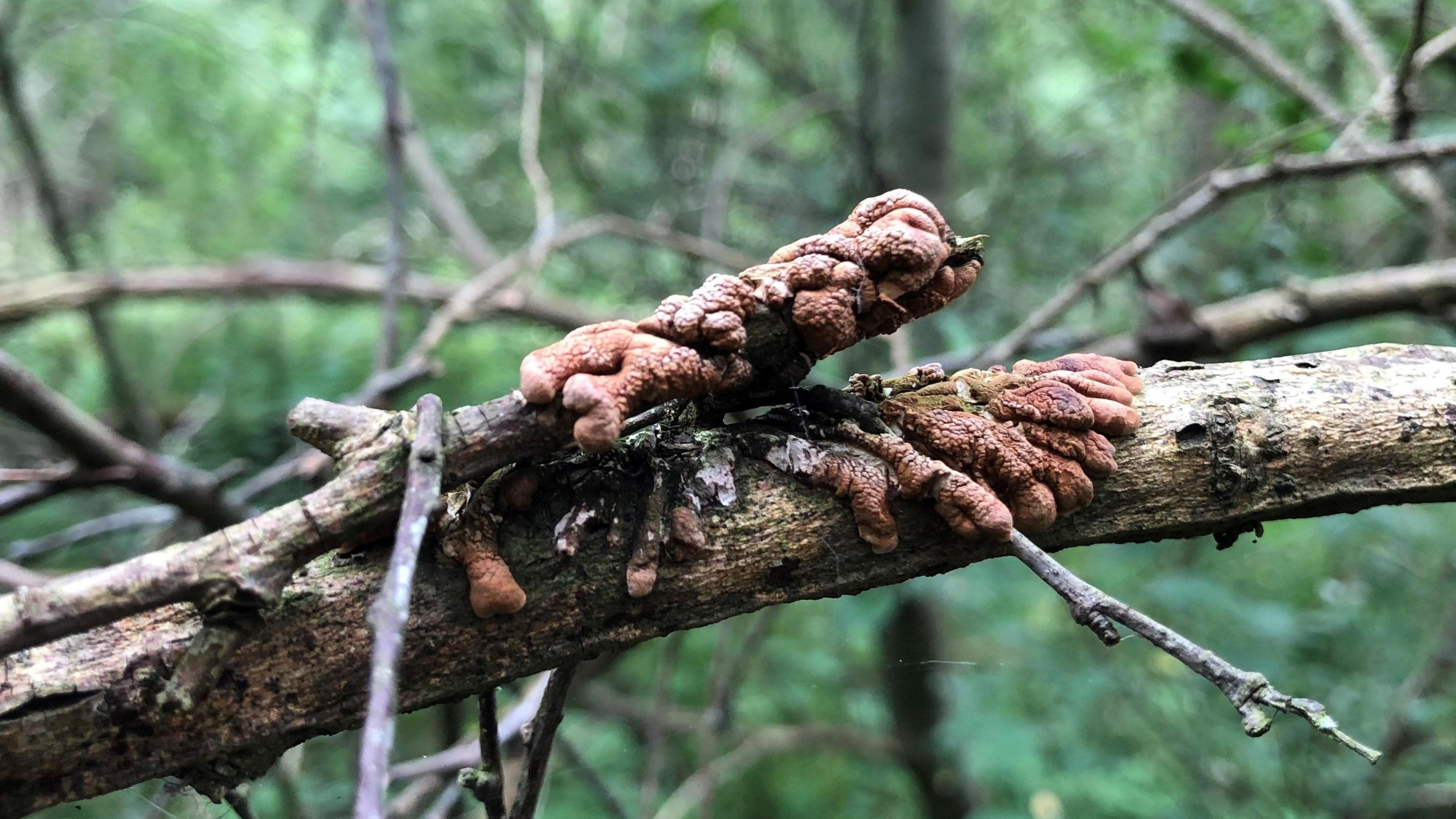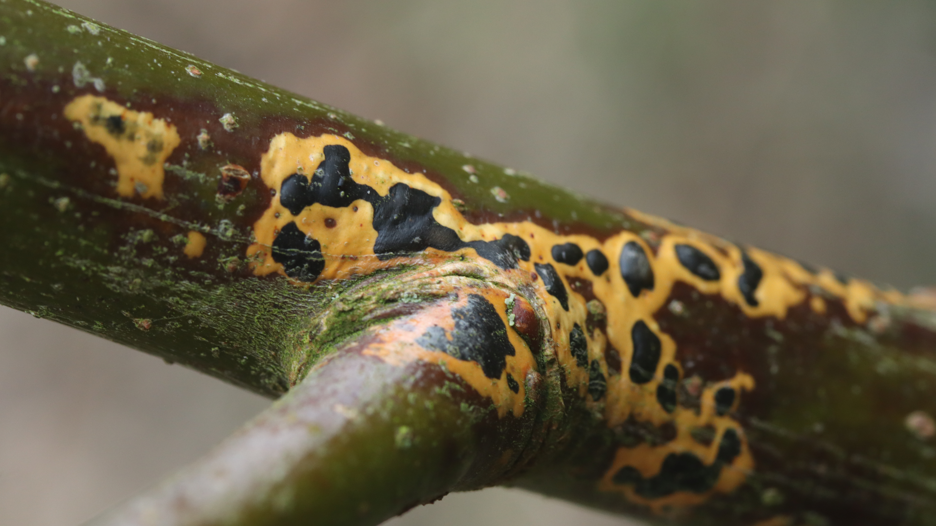'Too early' to say if rare fungus plan has failed

The fungus was rediscovered in the UK in the 2010s
- Published
A critically endangered fungus reintroduced to England, where it had been extinct, is still not growing but scientists say it is too early to suggest a project to save it has failed.
Parts of the fungus known as willow gloves were moved from the Scottish borders to woodlands in Cumbria in March last year.
Natural England fungi specialist Matt Wainhouse said this type of relocation had not been tried before and had not been straightforward.
Some specimens had since been eaten by rodents and others would not grow but Dr Wainhouse said this "doesn't mean the fungi is dead or that this has failed - it's just too early to tell".
The fungus was recorded in Cumbria in the 1800s and feeds off another fungus called willow glue which are typically found living inside decaying willow wood.
Willows are usually found in woods with very wet soils and Dr Wainhouse said the loss of these habitats in the UK had probably led to the loss of the fungus.
Willow gloves are extinct in England and Wales but were rediscovered by the Scottish Borders Fungi Group at two sites in Scotland in the 2010s.
One of those sites was one tree in a forest and was "so precarious", Dr Wainhouse said.

No one had tried moving the fungus before, Dr Wainhouse said
Last year, Dr Wainhouse and his colleagues moved parts of the fungus in a single day from the Scottish borders to three woodlands in Cumbria rich in willow trees, including Finglandrigg Wood.
The team hoped it would prosper in a new location and eventually become a "much more resilient population", he said.
The team tried different methods of transportation including moving part of the Scottish fungus along with a section of the tree it was attached to.
Attempts to also grow the fungus in a lab have been unsuccessful.
"It would not grow," said Dr Wainhouse.
"There is something about the host - the willow glue - that triggers the growth."
The outdoors specimens are regularly monitored by volunteers at the Cumbria fungi group but no new growth has been seen there either.
"It's a long game," Dr Wainhouse said.
Follow BBC Cumbria on X, external, Facebook, external, Nextdoor and Instagram, external.
Get in touch
Do you have a story suggestion for BBC Cumbria?
Related topics
Related stories
- Published13 February

- Published10 April

- Published21 October 2024
